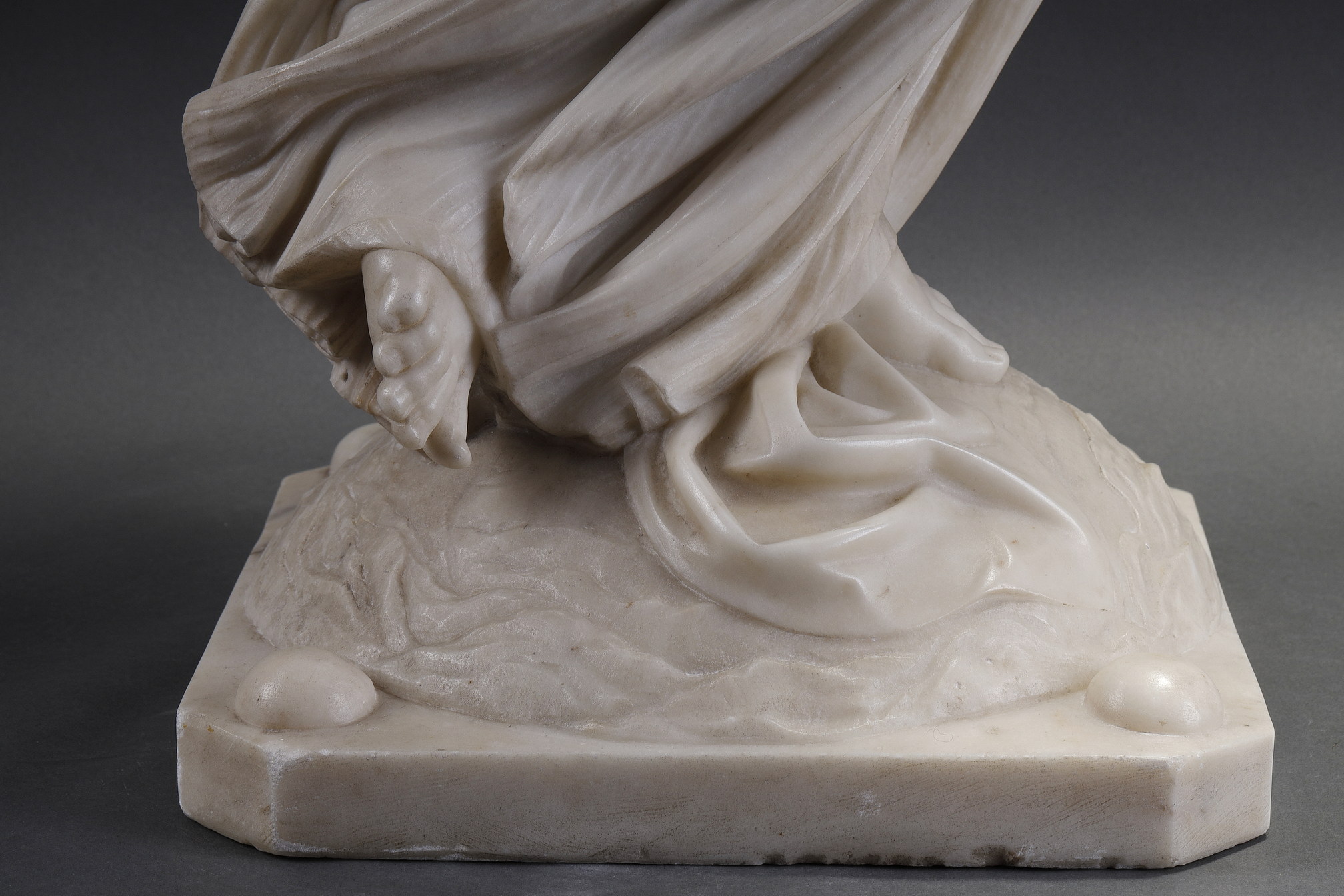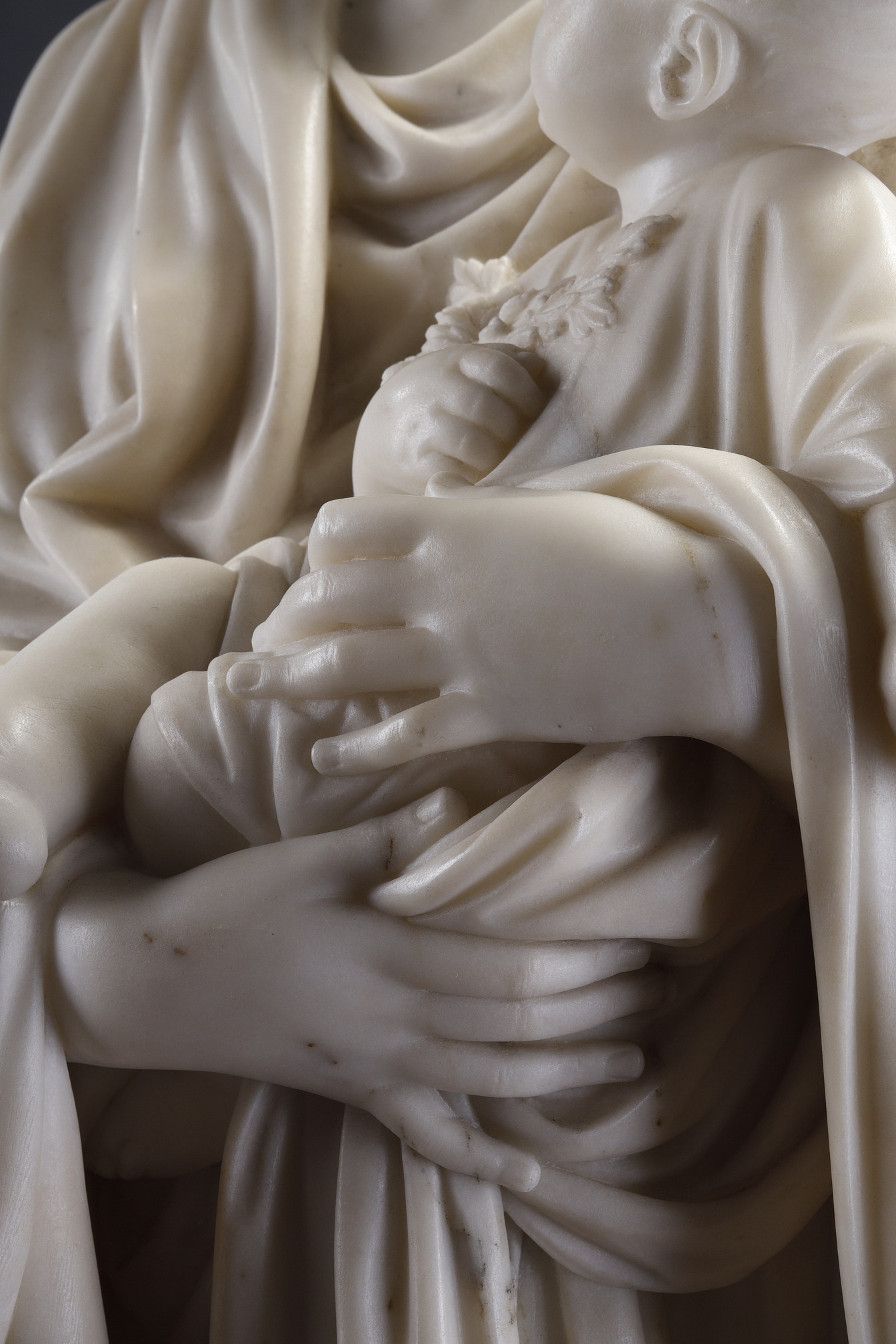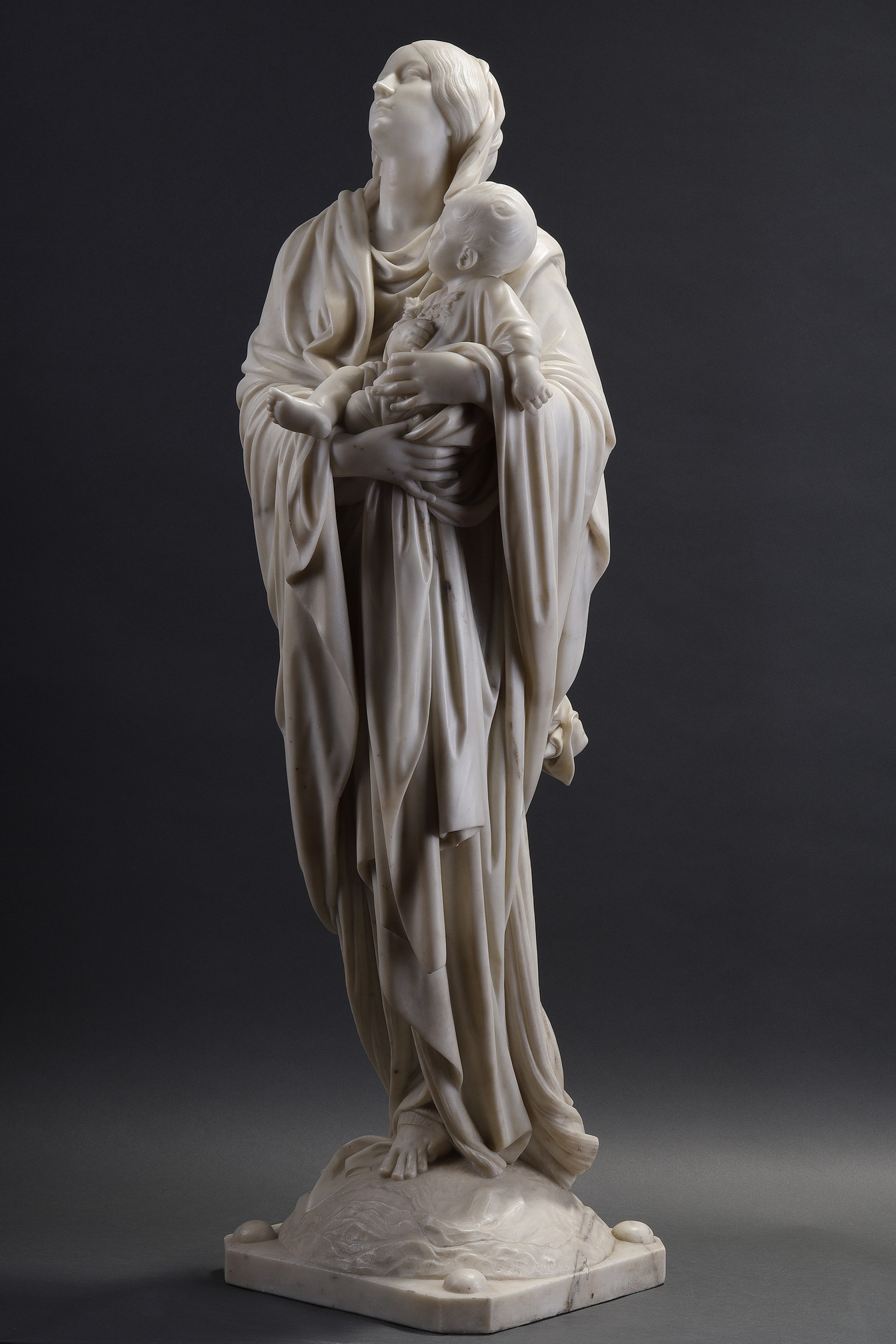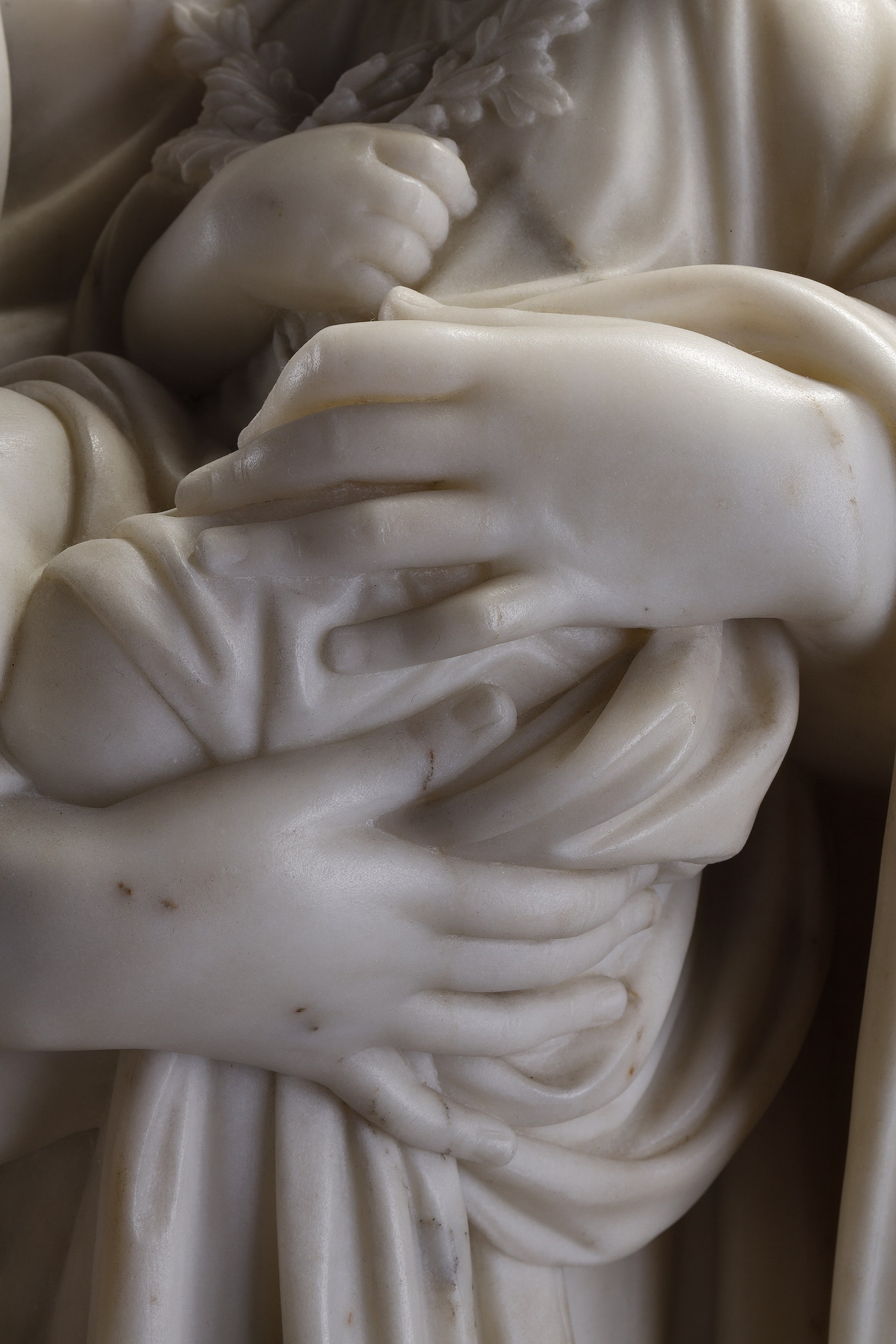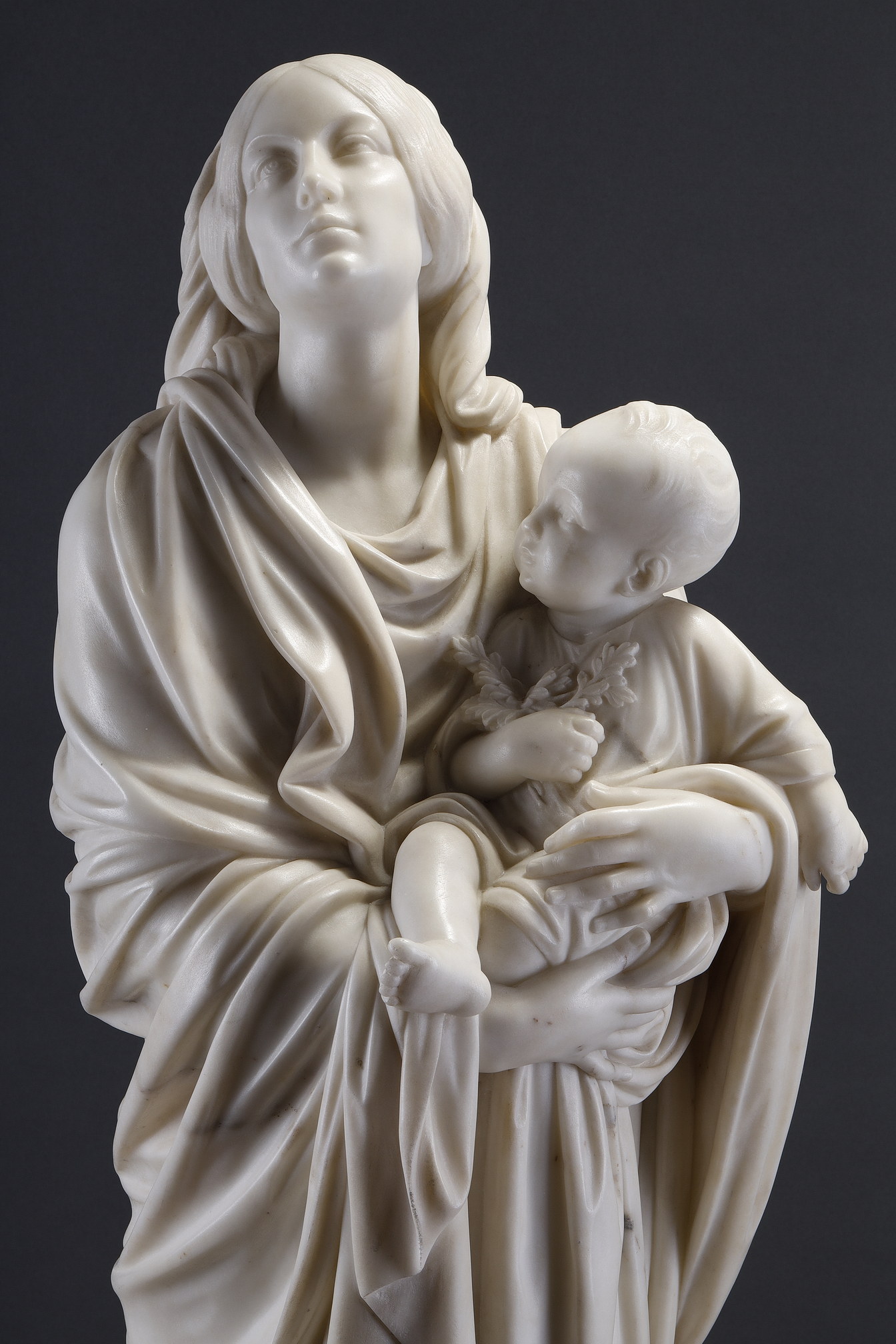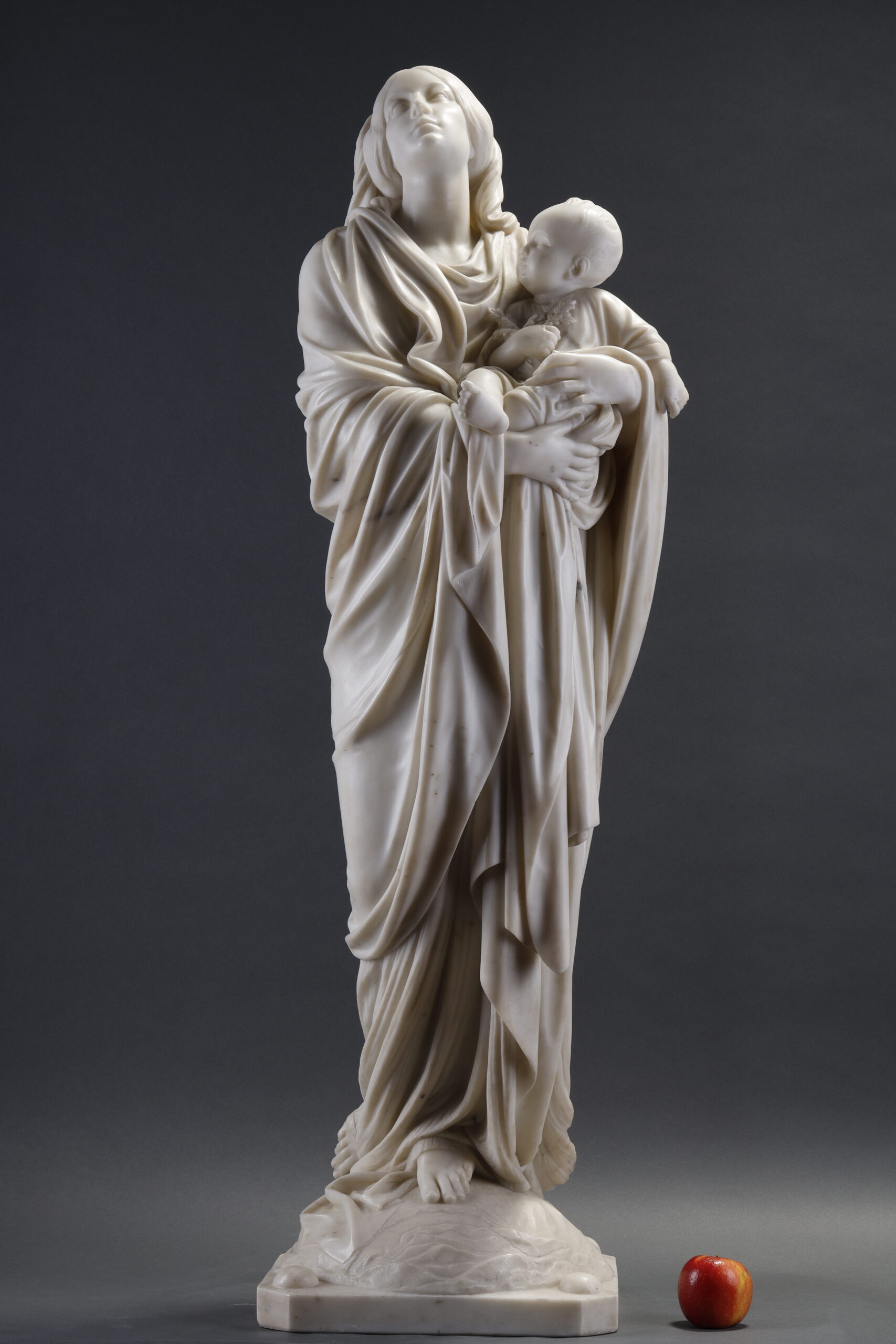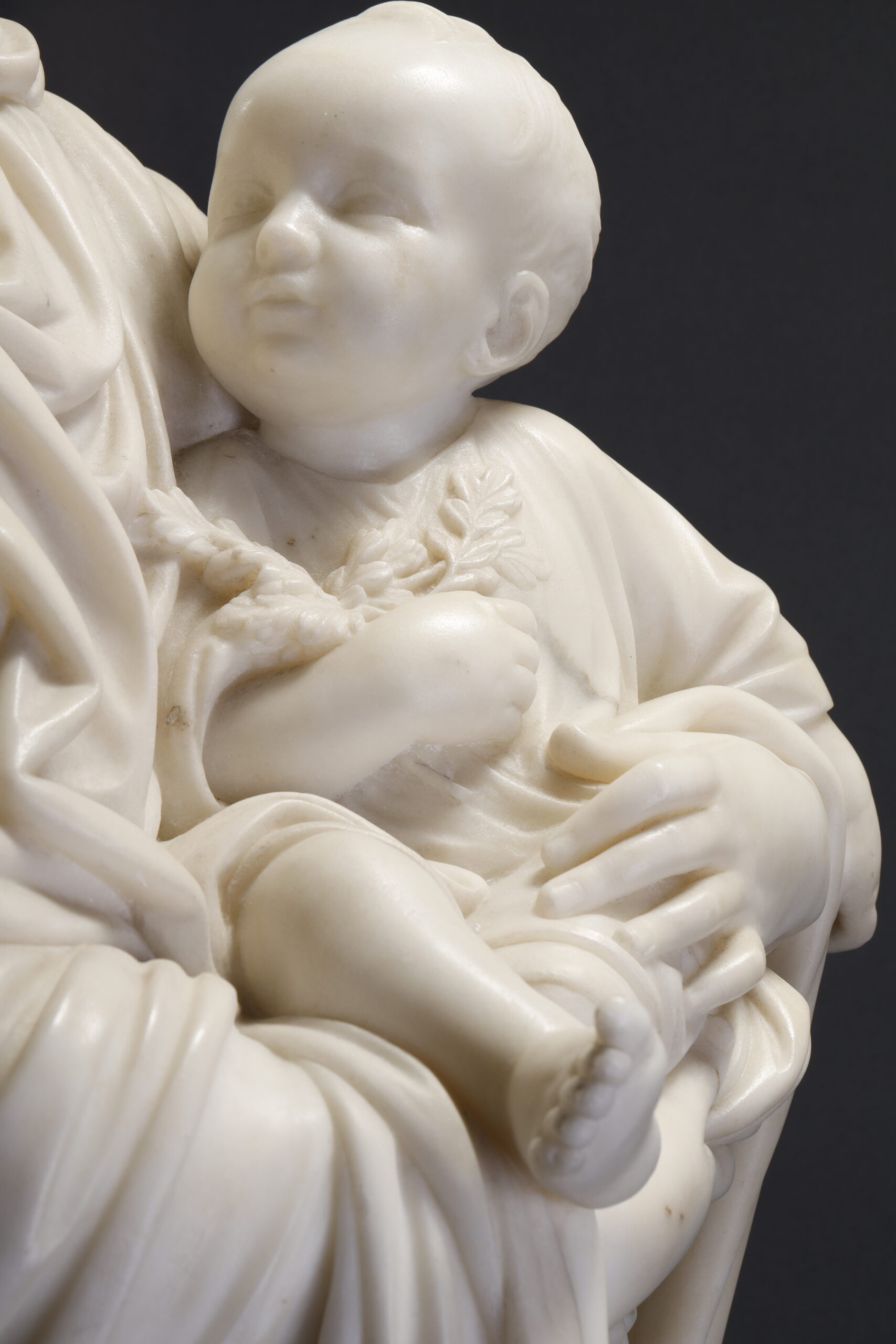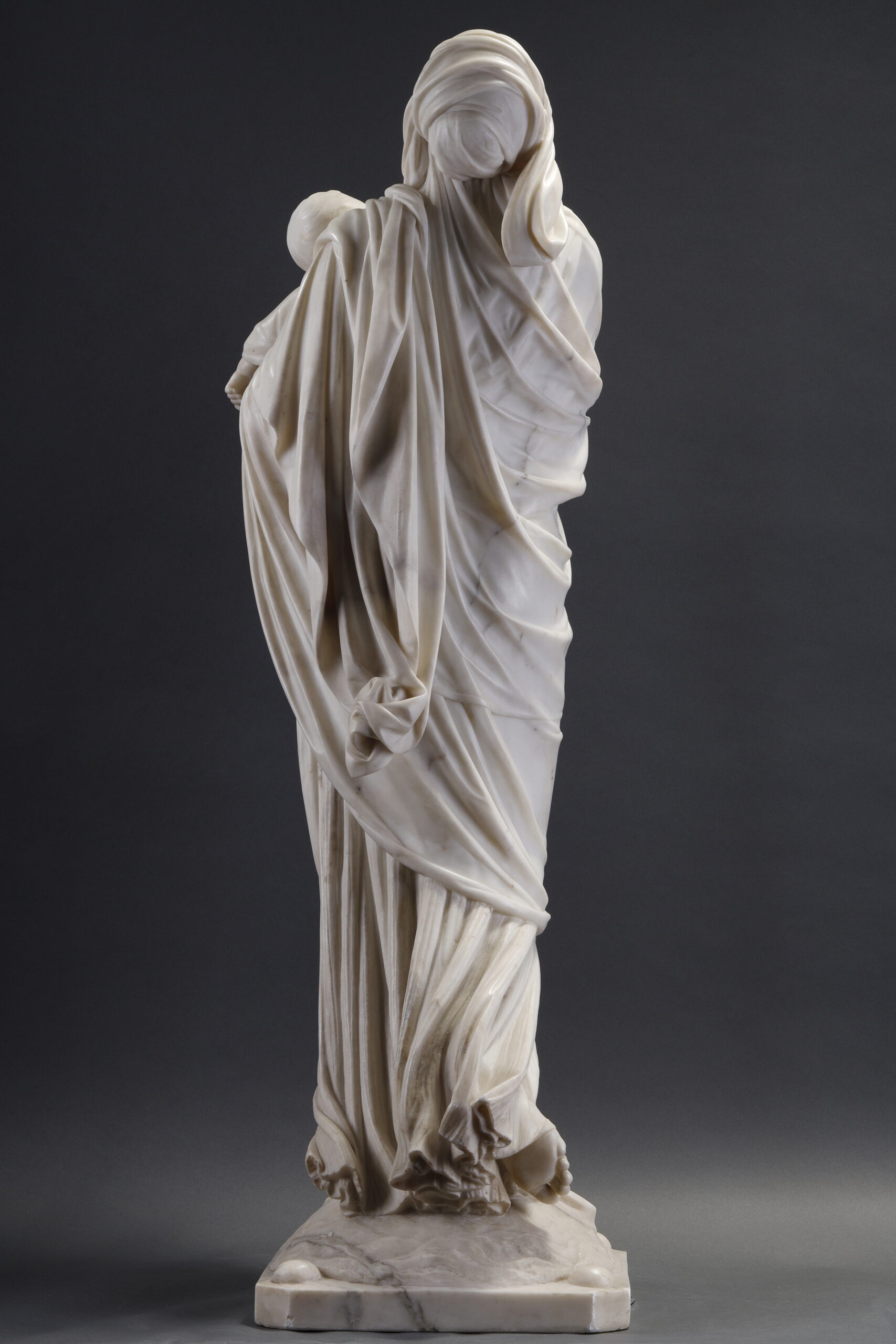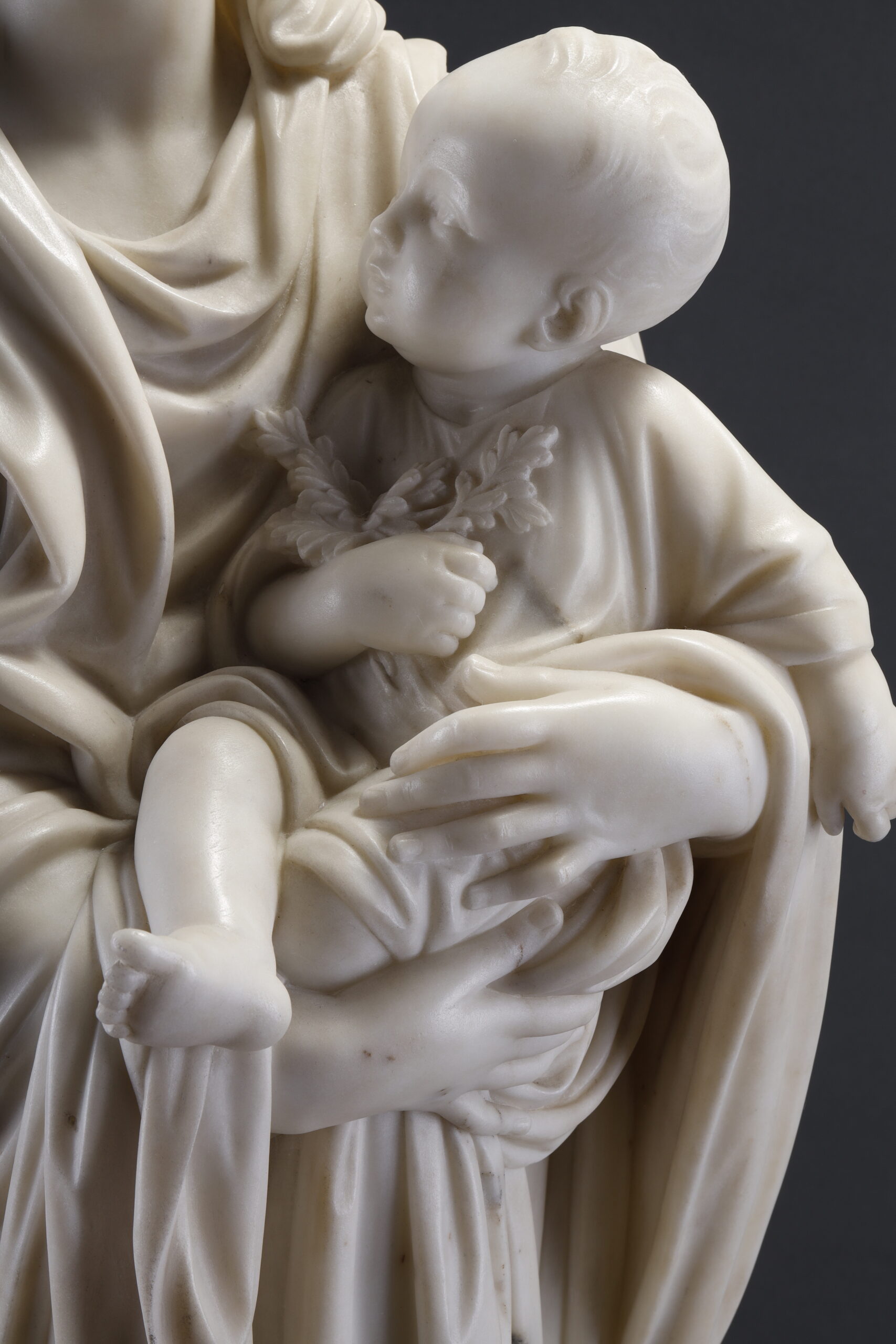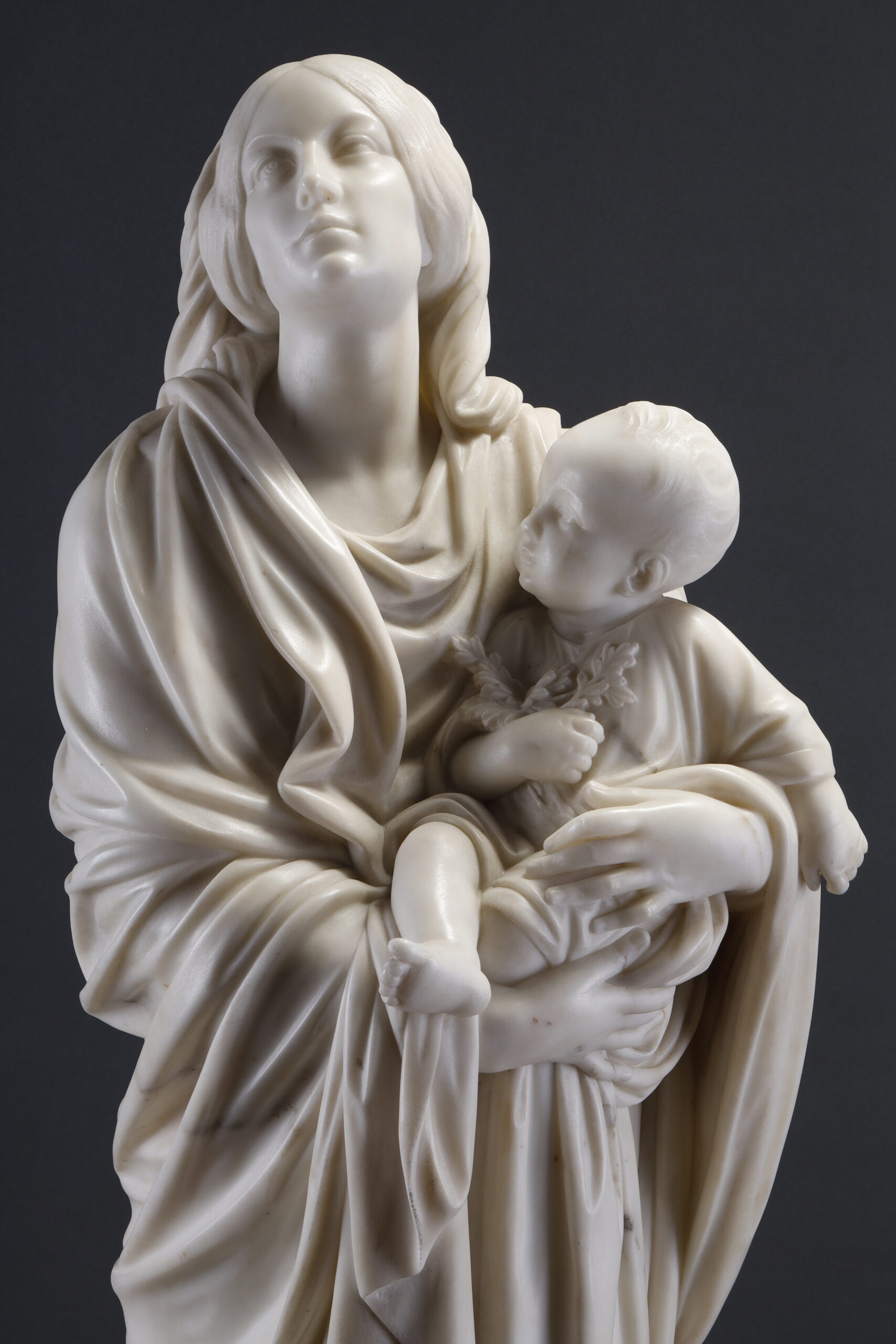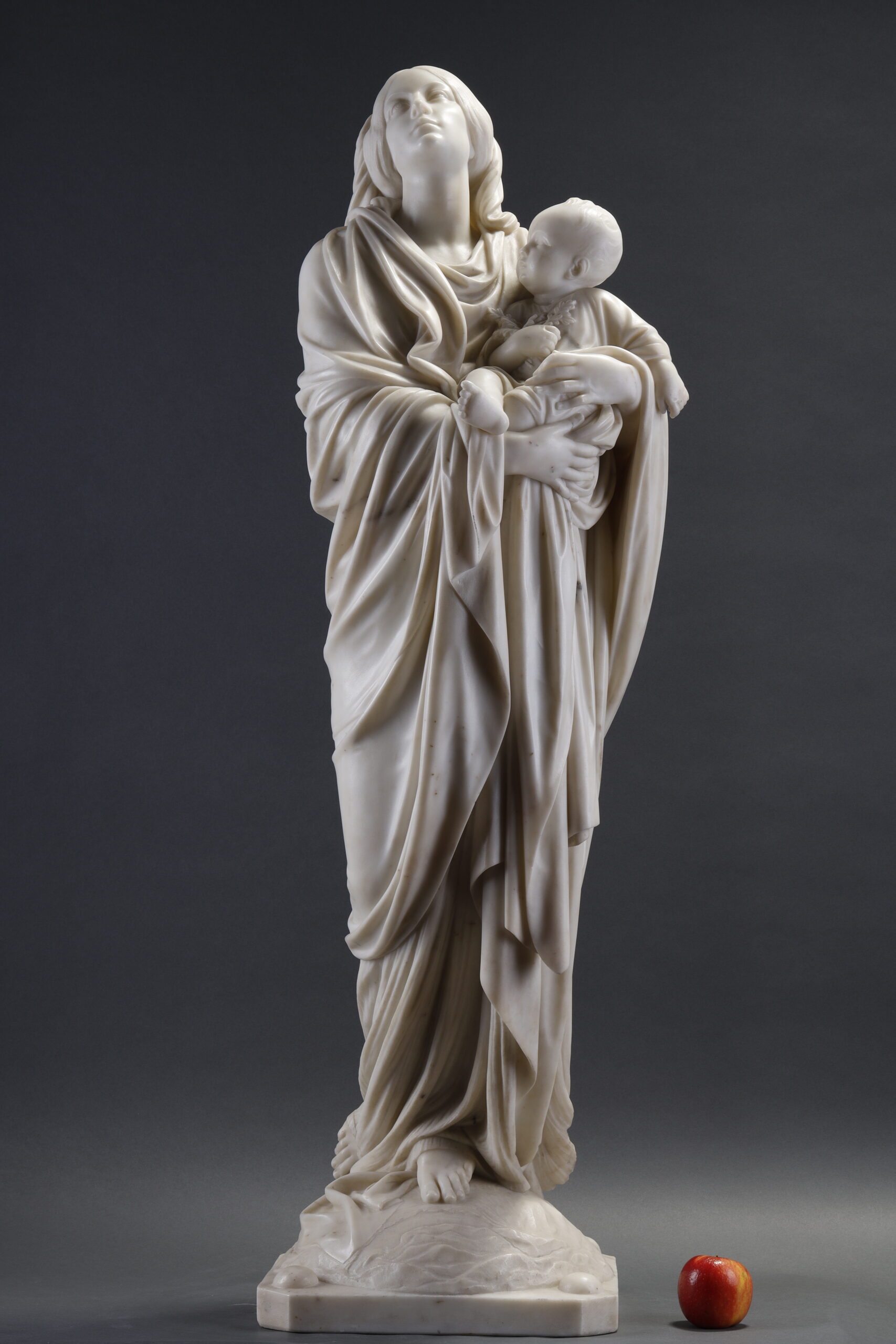
« A Mother Ascending to Heaven » by Joseph Ducaju
The remarkable Carrara white marble sculpture, « A Mother Ascending to Heaven, » created by the talented Belgian artist Joseph Ducaju, was first introduced at the Universal Exhibition in Paris in 1878.
« A Mother Ascending to Heaven » by Joseph Ducaju
Joseph Ducaju sculptures, often public monuments and royal figures, demonstrate exceptional mastery and acute sense of symbolism, as illustrated here.
The marble used is of exceptional quality, and the size of the sculpture is equally impressive. It is therefore not surprising that this work is mentioned several times in the literature of the time. His sculptures, often public monuments and royal figures, demonstrate exceptional mastery and acute sense of symbolism, as illustrated here.
The marble used is of exceptional quality, and the size of the sculpture is equally impressive. It is therefore not surprising that this work is mentioned several times in the literature of the time. His sculptures, often public monuments and royal figures, demonstrate exceptional mastery and acute sense of symbolism, as illustrated here.
Joseph Ducaju (Antwerp, 1823 – 1891)
Joseph Ducaju (Antwerp, 1823 – 1891) was a renowned painter and sculptor. After studying at the Antwerp Academy from 1842 to 1847 and in Joseph Geefs’ workshop, Ducaju mainly worked on statues and historical genre paintings. He played a key role in creating the statues of national glories for the young Belgian state.
Among his public works are statues of Boduognat, Baron Leys, David Teniers II the Younger, Gabriel Mudeus, and Leopold II. His « Helmeted Themis » statue (1880), which weighs 25 tons, crowns the pediment of the Brussels Palace of Justice. Ducaju received the Rome Prize in 1846.
Among his public works are statues of Boduognat, Baron Leys, David Teniers II the Younger, Gabriel Mudeus, and Leopold II. His « Helmeted Themis » statue (1880), which weighs 25 tons, crowns the pediment of the Brussels Palace of Justice. Ducaju received the Rome Prize in 1846.
- Overall height : 130 cm
- White Carrara marble sculpture.
- Universal Exhibition in Paris in 1878.
- As a testament to its importance, the work was exhibited a second time at the Antwerp Salon in Belgium, the artist’s native country, in 1882.
- Before 1950, this work belonged to the Mouton family and was part of the collection of Château Mouton in Aywaille. In 1950, when the Thirifay family acquired the Château, the sculpture remained on the property. It was later passed on by Madame Jeanne-Marie Thirifay to her grandson, Mr. Thomas Gavage, but it has always stayed in the family Château until 2020.
- 19th Century
- Engelen, C., & Marx, M. (2006). Sculpture in Belgium from 1830. Volume III. Louvain: Engelen – Marx. pp. 1357-1359.
- Véron, T. (1878). Paris Salon in 1878 and Universal Exhibition. Véron Dictionary. p. 309.
- General Commissariat. (1878). Catalog of the Universal Exhibition of Paris 1878 (3rd ed.). Paris: National Printing Office. p. 317.
- De Pesquidoux, D. (1881). Art in Both Worlds. Paris: E. Plon & Co. p. 368.

